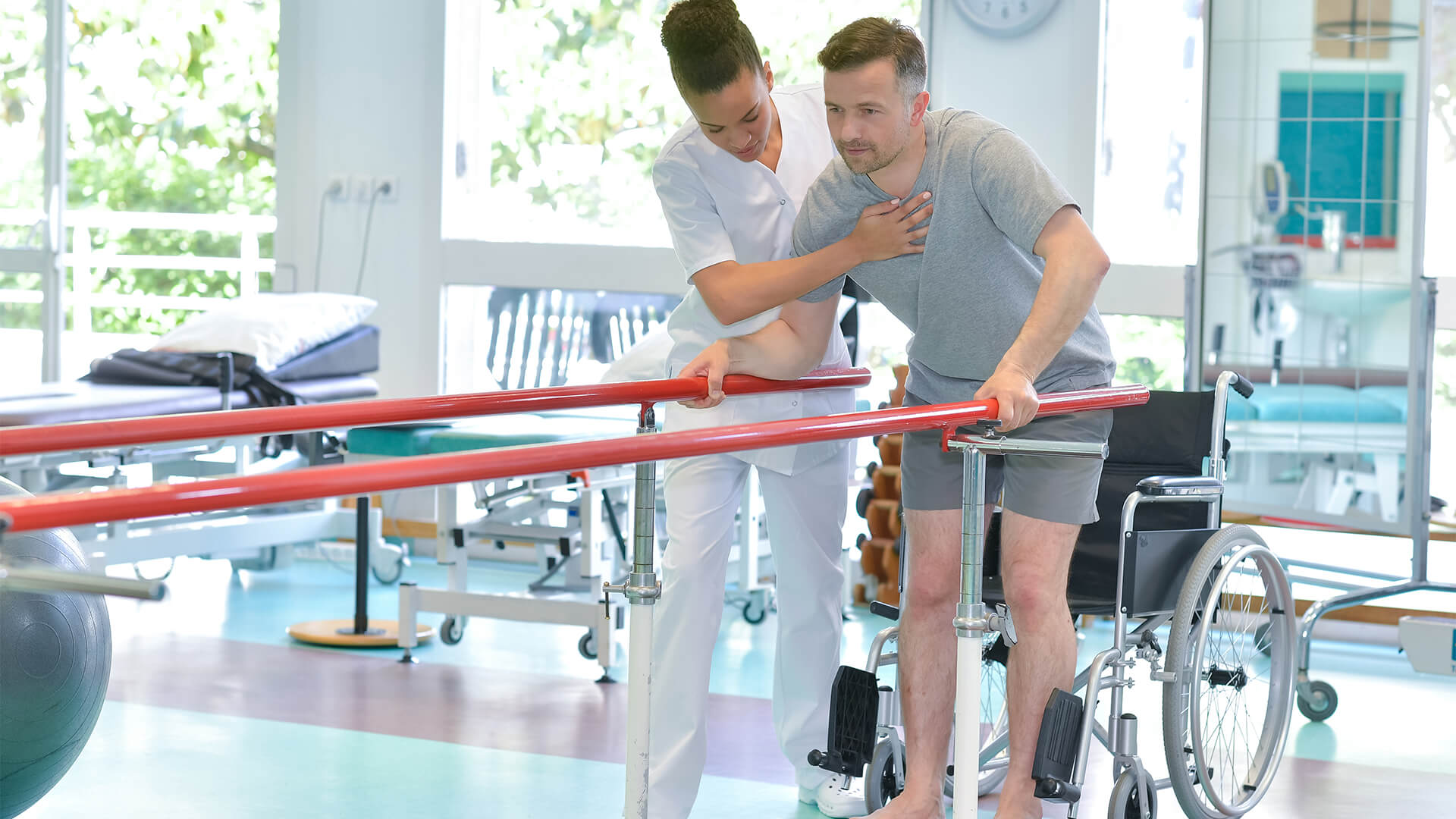Injuries, serious health conditions, and old age could take a heavy toll on your body. Oftentimes, you’d need physical rehabilitation to get back on your feet and regain your physical functions. A sound physical treatment plan would depend on the severity and type of injuries sustained by a person. Mobility, medical condition, and the specific needs of the patient are also taken into consideration.
Physical rehabilitation is time-consuming and entails a lot of patience. Not everyone’s expected to sail through the process without strong motivation and medical guidance. Put simply, a majority of the therapies’ success would depend on the patient and the healthcare professional.
However, there are certain ways to help you increase your chances of successfully regaining muscle strength and mobility in a fast and safe manner. Here are some of them.
1. Choose Healthcare Practitioners Who Can Help You
There are a number of healthcare professionals who could help you, depending on your case. You may need to shop around for the best practitioners to help you, or you can ask your friends for referrals. More than the qualifications, you’d need someone you can trust and feel comfortable working with as physical rehabilitation treatments could take months, sometimes years.
The key to finding the right physical rehabilitation service provider is to know what each practitioner does. Your point of reference would likely be your surgeon or physician.
Generally speaking, people who are injured and need rehabilitation turn to physiotherapists, occupational therapists (OTs), and spine specialists such as those found on Eastidspine.com and similar sites, as well as chiropractors. These professionals aim to help you with your physical challenges and limitations using non-surgical methods.
Here’s a look at how each healthcare practitioner works to help patients who need physical rehabilitation and how they could help with your physical injury treatment and pain management.
- Spine Specialists
Spine specialists focus on the treatment of spine, vertebral column, or backbone problems, including the nervous system and nearby sections of the body. Spine specialists may be any of the physicians with specialization in spine conditions or other healthcare professionals such as OTs, physical therapists (PTs), and chiropractors. Depending on the type of injury you have, as well as its severity and symptoms, you may need to seek the help of one or a few of these experts.
- Physical Therapists
PTs are trained to assess and treat irregular physical functions caused by injuries, disabilities, or certain diseases. PTs or physiotherapists are also experienced in rehabilitating abnormal functions and mobility problems, as well as restoring or improving physical activities and some have physical therapy certifications.
There are various work settings that need the presence of licensed physiotherapists. These include hospitals, clinics, schools, sports teams, rehabilitation centers, and nursing homes.
Like physicians, they’re involved in the diagnosis of problems with mobility and functioning. After pinpointing what could be wrong, these professionals would create a treatment plan aimed at addressing the problem. This often includes home care interventions such as stretching and gentle exercises.
- Occupational Therapists
OTs are different from PTs in that they focus on creating a more appropriate environment for injured persons and individuals with disabilities, whether physical or otherwise.
Most of them work with injured persons or people with disabilities and their families to perform basic and daily activities, as well as other developmental goals. Besides designing interventions for persons with challenges in physical movements, OTs are often seen developing plans for children, adults, and the elderly who have musculoskeletal, neurological, and other limitations.
These professionals will also be involved in evaluating the patient’s progress. And if a treatment design isn’t working as expected, they may need to change some components of the treatment.
- Chiropractors
These professionals are classified as practitioners of alternative medicine, but they’re licensed and trained experts, too. Before practicing, a chiropractor has to attain a bachelor’s degree before being admitted to a chiropractic school, where they earn their title as a doctor of chiropractic studies. They’re, however, not considered medical doctors.
Chiropractors spend up to four years getting their title while studying the complex relationship between the spine and the nervous system, including the bones, nerves, and ligaments. As such, they may also be called spine specialists as they help patients regain the integrity of the spine and improve a patient’s pinched spinal and neurological tissues.
After evaluating the patient, chiropractors also design a treatment plan, which, apart from stretches and gentle movements, may include dietary recommendations to the patient. Being a complementary medicine practitioner, they may include acupuncture and massage as adjunct therapies, or referrals to doctors, as necessary.
People with back pains, neck problems, sports or accident injuries, and arthritis often turn to chiropractors for additional help. Other problems referred to chiropractors may include pain in the arms and legs, muscle pains, as well as headaches.
Which Type Of Professional Could Help You With Your Injuries?
The type of injury you have and your specific goals are the main considerations in choosing the best healthcare practitioner for you. It helps to ask guidance from your doctor, if you’re still planning to choose one.
Most often, each professional is needed in different stages of rehabilitative or restorative care. For instance, if you’ve had a sports injury and had been operated on, your doctor would likely refer you to a PT or a chiropractor, depending on the type of injuries and body sections involved.
Once you’re undergoing rehabilitative care, you and your family may visit an OT to help you recover more swiftly. In severe injuries with low chances of full recovery, a doctor may even refer the patient to a mental health expert to help with psychological therapy.
2. Take Your Medical Records
After getting the green light from your doctor or after deciding for yourself who among the healthcare professionals you’re going to visit first, make sure you bring your medical record, especially if you’ve just had surgery due to severe injuries.
Show the practitioner your laboratory results, doctor’s diagnosis and prognosis, prescriptions, and imaging results, such as those from your X-ray, computed tomography scan, or magnetic resonance imaging. Try to be clear in conveying your problems and physical pain triggers. Doing this could help the physiotherapist, chiropractor, or OT to evaluate your case and pinpoint your problem areas with more precision. Ultimately, it could help them develop a treatment plan that’s most suited for you.
3. Prepare For Your First Consultation Appropriately
Chiropractors and physiotherapists may need to perform physical manipulations as part of their evaluation. To assess your mobility and function, as well as form, you may be asked to lay on your side, walk or jog, hop, or perform any other physical tests to know the problematic areas. They may also ask you to perform specific home exercises while you’re in the clinic, just to make sure you’re able to perform the stretching and mild movements included in the treatment plan.
In anticipation of these activities, you would need to wear comfortable shoes and not your work boots. You don’t want to skip this tip even if you’re planning to avail of telemedicine solutions for physical therapy and pain management.
4. Know What To Expect
The licensed professional would normally start with an evaluation and diagnosis by observing the patient. Further laboratory examinations or imaging tests may also be needed.
Besides the physical assessment, where the motor skills, mobility, and range of motion movements are checked by the healthcare practitioner, there are other potential movements and test therapies that you may be asked to do while at the clinic.
To test how you may fare with the proposed treatment, doctors could perform other therapy dry runs, like mobility training, where you’d be asked to learn how to use movement aids such as a wheelchair or cane. This is to allow them to see how these movement aids may be useful as you try to regain your ability to walk. In other cases, especially in trying to improve your functions, the doctor may restrain your uninjured limbs while asking you to slowly move your injured limbs.
5. Don’t Be Afraid To Ask Questions
Most patients are too shy to ask questions or are simply waiting for their doctors to read their minds and body language. But this shouldn’t be the case as physical rehabilitation lies in your hands, too.
If you feel like asking any question, try to do it while you’re still in the clinic or consulting with your doctor online. Take the opportunity to discuss things about the injury. For instance, you may talk about the areas in which you feel pain, the treatment length, and the purpose of each element of the proposed treatment plan. Remember, these professionals are generally busy people and see many patients on a daily basis. So discuss whatever you need to discuss with them, but try to take it easy and avoid confusion.
In addition, share your objectives with your therapist so they could help you achieve them. For instance, if an accident left you in a bad shape and you can’t walk without an aid, you may tell your healthcare provider you want to get rid of the cane in, say, one month. While this goal may depend upon a few factors, knowing you have a target may help them tailor your rehabilitation plan based on these (doable) goals.
6. Diligently Follow Your Home Treatment Plan
Experts normally recommend that an injured individual stay mobile to prevent further accidents and other problems related to inactivity. Treatment plans designed by physical and occupational therapists will likely include in-home activities and exercises.
A huge part of your treatment’s success would depend on how good you are at following in-home instructions. So try to follow their suggestions by heart. For instance, if your therapist asks you to get rid of eggs as part of your recovery diet, try to do it without fail.
For pain management, it would help to know how else you could avoid taking opioid-based pain medications. Some swear by the efficacy of certain methods such as acupuncture and massage, as well as taking herbal teas.
7. Learn How To Perform Exercises While Injured
Muscle atrophy is one of the worst things that could happen to a severely injured person. This condition occurs when long periods of inactivity force one’s muscles to shrink. Thus, persons with limited mobility are encouraged to perform gentle movements on a regular basis.
There are exercises that may be done based on the type of injury you have. However, care should always be taken in performing these activities. Remember not to push yourself too much to avoid getting reinjured. The following are the exercises you may perform:
- For back pain and other problems: Walking, climbing stairs, biking, as well as performing squats and lunges could work best for persons with these problems. However, it’s important to make sure these are performed correctly.For knee injuries: Perform gentle movements that keep your hips and ankles moving. Or you may consider yoga and tai chi.
- For neck injuries: If you feel better, try swimming and yoga, as well as other movements that could help improve your posture and strengthen your shoulders. Try to maintain proper posture at all times. Avoid looking down while reading messages on your smartphone or leaning close to your computer.
- For shoulder injuries: If you’re suffering from rotator cuff or other types of shoulder problems, you could use the treadmill, ride an exercise bike, or jog around the park.
Things To Do Before Performing Exercises
- Ask Your Doctor Or Therapist For Green Light
Not all injury treatment plans may include performing physical exercises at home. To avoid accidents and injuries caused by inactivity, however, you may take it upon yourself to perform stretching activities or other gentle movements. But remember to do it only after discussing with your healthcare provider.
- Take It Easy
Some people may be under the (false) impression that pushing oneself to the limit means they’re going to get better faster. However, this may not be true. By performing more intense exercises or doing more repetitions, you could be exposing yourself to a new problem or reinjury.
- Focus On Low-Impact Exercises
You don’t have to perform squats and lunges right away, especially if you have knee problems. It’s better to stick to gentle exercises such as yoga, tai chi, water aerobics, walking, or biking.
You may try performing specific movements, but try to tone it down and stop when you feel intense pain. It’s important to perform stretches beforehand to make sure your body is prepared and also help avoid pain due to knotted muscles. Don’t forget to do the same after you’re done moving.
- Always Check Your Exercise Form
If your therapist didn’t require you to perform specific exercises while at the clinic and you’re not a gym buff, you don’t have to worry. You may check reliable online videos to know how your body should look like when performing specific exercise movements. You’d likely increase your risk of injuring yourself if you don’t perform the exercises properly.
- Variety Is Key
Cross-training is one of the best ways to avoid reinjuring yourself. Switching your exercise routine may help to prevent your muscles from getting overworked or your joint from getting sprained. For instance, you could take a walk on Mondays, ride your bike on Tuesdays, have Wednesdays as your yoga day, and make Thursdays your Pilates day. You may then rearrange these activities for the next and following weeks.
Final Thoughts
Recovering from physical injuries may take a long time, but you and your healthcare professional could work together in accelerating your recuperation process. Thus, it’s important to maintain open communication and identify which treatments work and don’t work.
To monitor the progress of your physical rehabilitation efforts, consider keeping a diary where you could jot down important milestones or other small wins. This may help you stay motivated and positive.



















